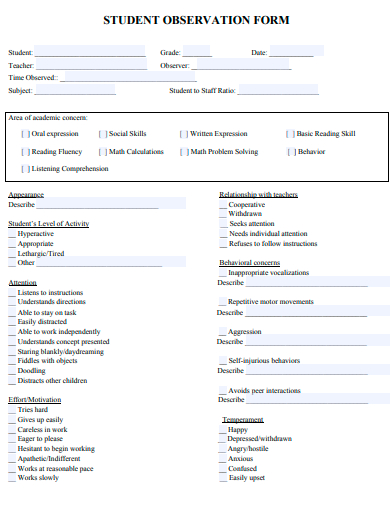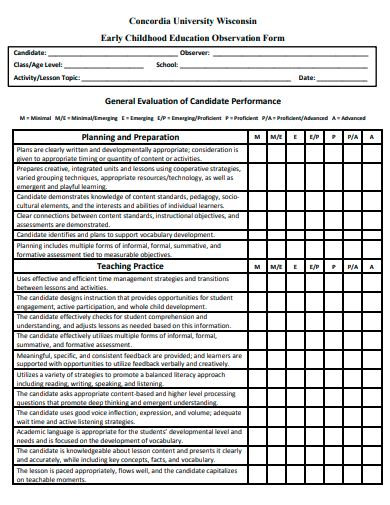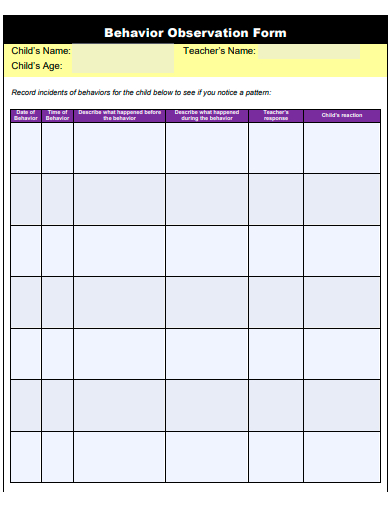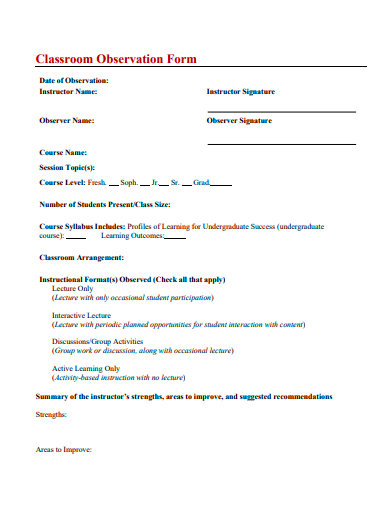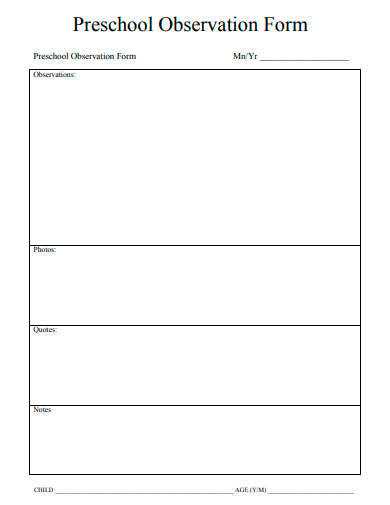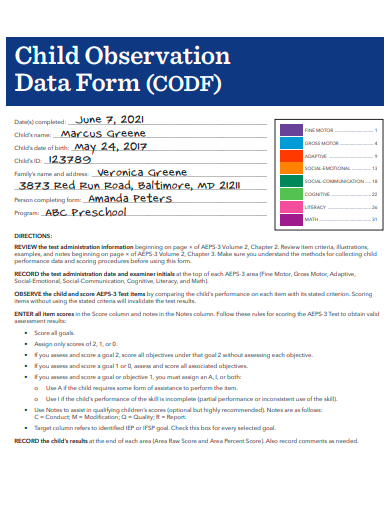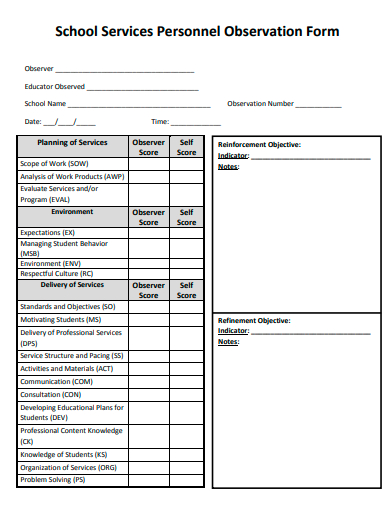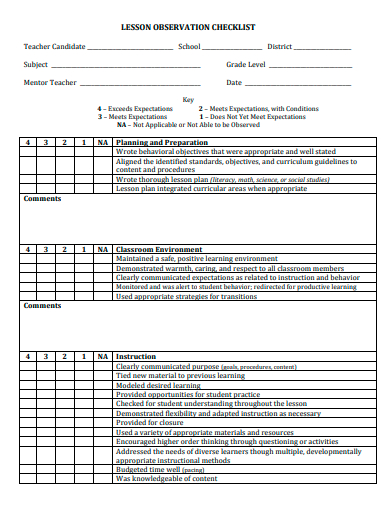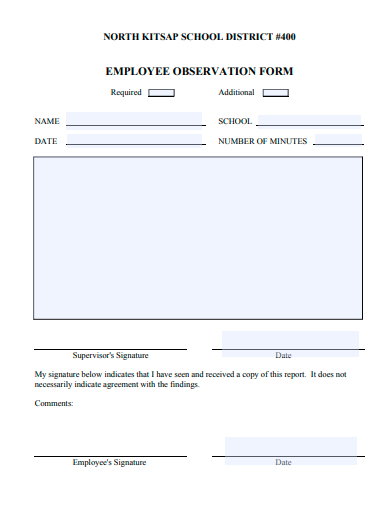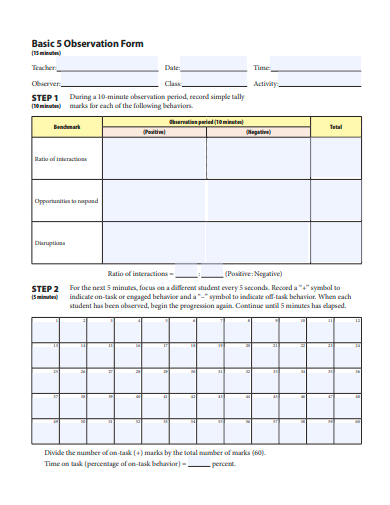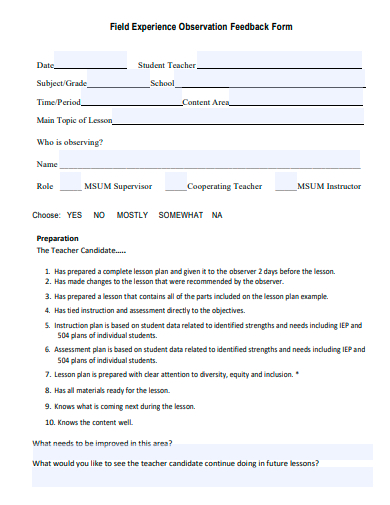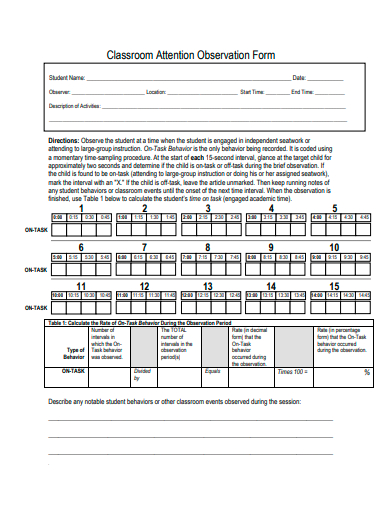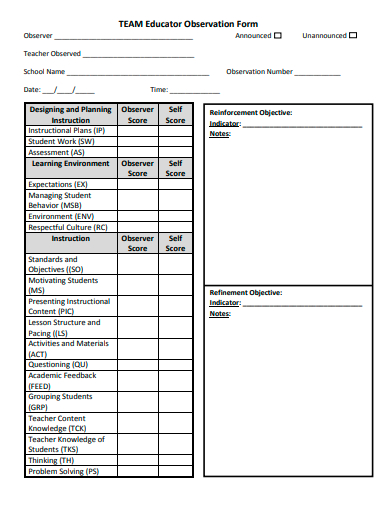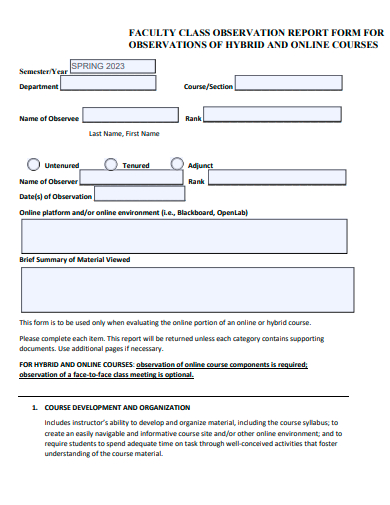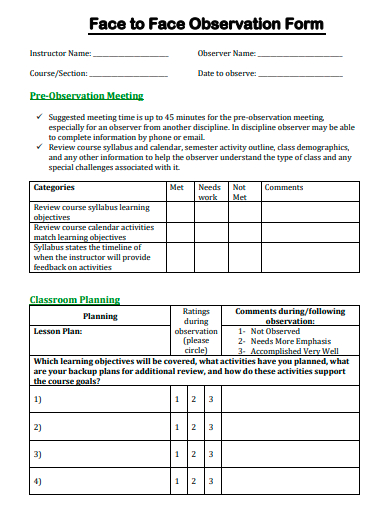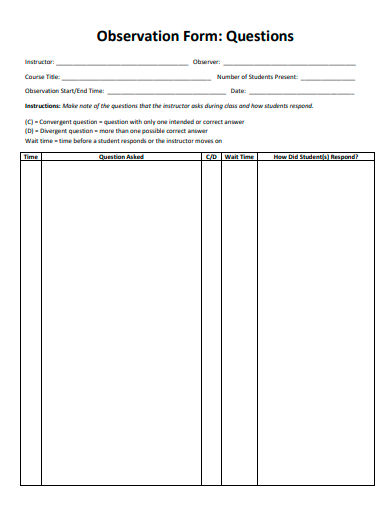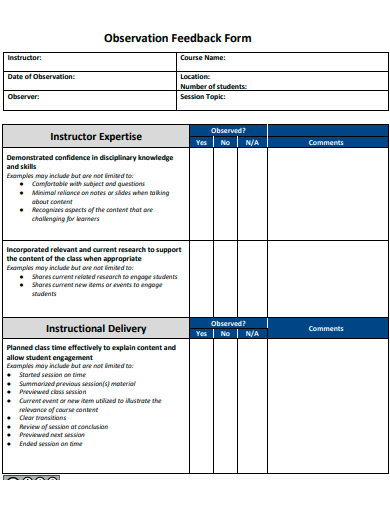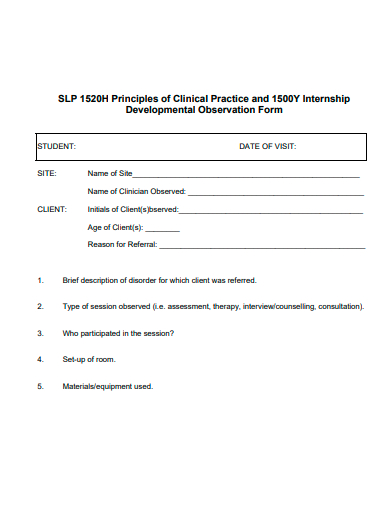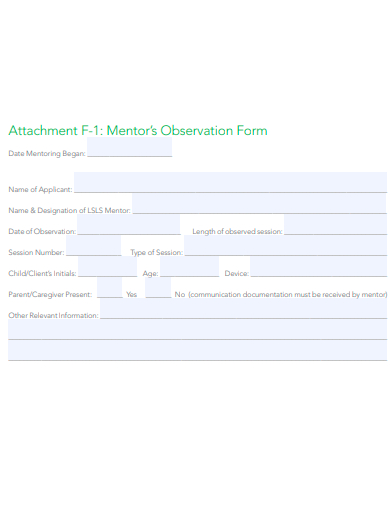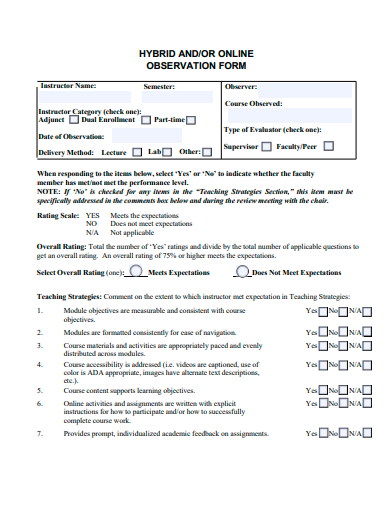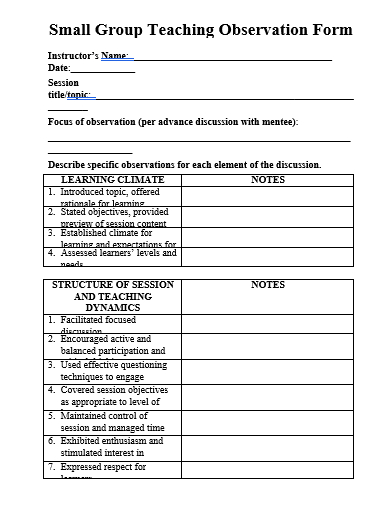Observation forms are templates that are adaptable and can be provided using different formats, depending on the specific requirements of a particular situation. These forms can be digital or paper-based and often include rating scales, checkboxes, or open-ended questions to provide guidance on how to properly take notes. Well-designed observation forms improve their utility by simplifying the data collection or essential information and enabling efficient data analysis. Some of the alternative documents that observers can use are narrative reports, investigation checklists, video or audio recordings, field notes, interviews, questionnaires or survey forms, and more.
20+ Observation Form Samples
1. Student Observation Form Template
2. Early Childhood Education Observation Form Template
3. Behavior Observation Form Template
4. Classroom Observation Form Template
5. Preschool Observation Form Template
6. Child Observation Data Form Template
7. School Services Personnel Observation Form Template
8. Lesson Observation Form Template
9. Employee Observation Form Template
10. Basic Observation Form Template
11. Field Experience Observation Feedback Form Template
12. Classroom Attention Observation Form Template
13. Team Educator Observation Form Template
14. Faculty Class Observation Report Form Template
15. Face to Face Observation Form Template
16. Observation Form Template
17. Observation Feedback Form Template
18. Developmental Observation Form Template
19. Mentors Observation Form Template
20. Online Observation Form Template
21. Small Group Teaching Observation Form Template
What is an Observation Form?
Observation forms are also referred to as observation checklists, observation protocols, observation sheets, observation records, observation logs, observation diaries, observation charts, observation worksheets, and more. These names can be used interchangeably and chosen names can be based on the field, purpose, and preferences of the researcher or observer. These forms are used as a tool to capture accurate and comprehensive data in different contexts like educational, research, medical, and professional settings.
How to Create an Observation Form
An observation form commonly contains fields and sessions that enable an observer to take note of relevant information like date, time, location, and names of the involved participants as well as other contextual information that might influence the observed event or behavior. Observation forms sometimes include spaces for detailed descriptions of the observed interactions, behaviors, or occurrences to capture objective and unbiased data. Other types of observation tools that individuals from various disciplines can use include classroom observation checklists, safety observation reports, observation schedule templates, observation feedback forms, and child observation reports.
Step 1: Include the Purpose and Objectives of the Observation Form
Begin by providing a clear definition of the observation form’s purpose and specifying the objectives you want to accomplish. Determine the types of behaviors, events, or data you are intending to observe and record.
Step 2: Determine the Form’s Key Elements and Categories
Break down your observation into relevant categories like participant information, date, time, location, specific behaviors, interactions, or other relevant information. Organized the collected elements in a logical order within the form while ensuring that they align with your objectives.
Step 3: Create the Form’s Layout and Format Design
Choose the most appropriate formatting style that suits your needs and preferences, whether it’s in digital or paper-based formats. Categorize each of the form’s sections to give focus on different aspects of the observation.
Step 4: Conduct Pilot Testing and Make Revisions
Before the form’s implementation, conduct pilot testing with a small group of observers to determine any possible redundancies, usability issues, and ambiguities. Based on their feedback, make necessary adjustments to finalize the observation checklist.
FAQs
What are the most commonly used types of observation forms?
The most commonly used types of observation forms are structured observation forms, anecdotal observation forms, event sampling observation forms, time sampling observation forms, and checklist observation forms.
What is the basic format used in the creation of observation forms?
Observation forms’ basic formatting includes a header, participant information, observation categories, observation notes, additional information, observer details, comments or remarks, and a footer.
What are the purposes of implementing observation forms?
Observation forms are often used for data collection and documentation, research and analysis, assessment and evaluation, professional development, quality control and compliance, behavioral studies, clinical assessment, documentation of events, program improvement, and personal and professional growth.
Observation forms are widely implemented to serve several important purposes across different fields and contexts. They play a crucial role in improving objectivity, consistency, and accuracy in data collection, decision-making, and understanding complex phenomena. These forms also contribute to the collection of valuable insights that enable improvements and advancements in different industries or sectors like education, medicine, research, and in other professional settings.
Related Posts
Sample Employee Declaration Forms
Sample Release of Liability Forms
Sample Training Feedback Forms
Sample Sworn Affidavit Forms
Vehicle Inspection Forms Samples & Templates
Sample Employee Advance Forms
Sample Child Travel Consent Forms
Sample Testimonial Request Forms
Sample Employee Details Forms
Sample Divorce Forms
Sample Attestation Forms
Employee Performance Appraisal Form Templates
FREE 9+ Sample Presentation Evaluation Forms in MS Word
FREE 10+ School Admission Form Samples & Templates in MS Word | PDF
FREE 30+ Patient Consent Form Samples in PDF | MS Word

